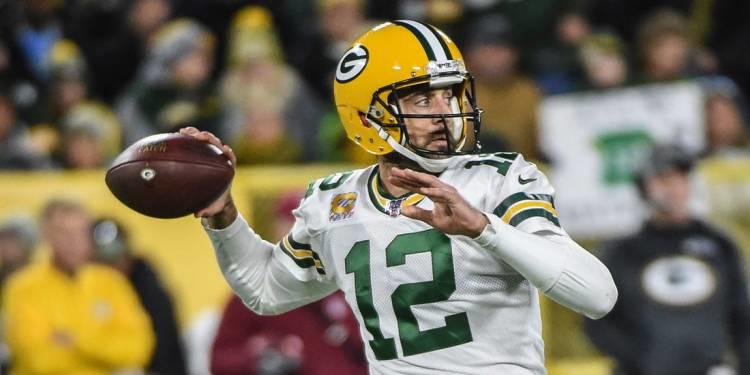
It was hard to believe that anyone filling the void Brett Favre left in Green Bay would be able to succeed. However, under the Hall of Fame quarterback's tutelage, he's become one of the greatest quarterbacks of this current generation. Extremely poised and precise, Aaron Rodgers has proven that he's the real deal and the best successor Green Bay could have asked for. Rodgers began his college football career just fifteen miles away from his hometown in Chico, California at Butte Community College in 2002. The following year, Rodgers took his talents to the University of California, Berkeley. After being named MVP of the 2003 Insight Bowl and throwing for 5,469 yards in just two seasons with Cal, Rodgers decided to opt for the 2005 NFL Draft.
Aaron Rodgers was drafted 24th overall in the 2005 NFL Draft by the Green Bay Packers where he didn't transition into the starting quarterback position until 2008 when Brett Favre announced his initial retirement. Since then, Rodgers has led the Packers to a championship victory in Super Bowl XLV where he also named the game's MVP. He's also been named the NFL MVP on two occasions in 2011 and 2014. In 2013, Rodgers signed a five-year extension with the Packers worth $110 million. In 2018, Rodgers signed an additional four-year contract extension worth $134 million lining his pockets with a total of $66.9 million for that single season.
Not all celebrities have fame and fortune, some are just famous – and in a ton of debt. They came from rags to riches, then went back to rags. Whether they’ve filed bankruptcy, ended up in court, or just can’t stop spending, celebrities mismanage their money just like everyone else. They just hide it well.
50 Cent coined the term “wanksta,” then “partied like it was his birthday” until he filed Chapter 11 bankruptcy in 2015. The rapper was said to be anywhere between $10 million and $50 million in debt. In 2016, a federal bankruptcy court judge in Connecticut approved a plan for the founder of G-Unit to pay his debts back. He was able to get his bankruptcy discharged in February of the following year.
Following a 45-year-long career in Hollywood, acting in more than 70 films, actor Gary Busey found himself in more debt than he was worth. In 2012, it was reported that Busey owed between $500,000 and $1 million worth of debt, but only had $50,000 to his name. The 74-year-old actor owed money to hospitals, banks, the L.A. Waterworks District, and even a storage company. He filed Chapter 7 bankruptcy that same year. Despite his longstanding career in Hollywood, Busey's net worth is now only $500,000.
Burt Reynolds is still worth five million dollars, but his battles with debt date back more than 20 years. Between bad investments and a pricey divorce from actress Loni Anderson, the 1970s superstar had to deal with over $10 million in debt and decided to file Chapter 11 bankruptcy in 1996. While testifying in a 1994 custody hearing, the South Florida native said he spent $40 million getting through his divorce.
The former Hollywood bad boy, Charlie Sheen owes the IRS nearly $5 million. But that's not all. In 2016, his net worth was reportedly still as high as $150 million, but he was nonetheless $12 million in debt at the time – including mortgages, legal fees, and taxes. That same year, Debt.com reported Sheen owed nearly $300,000 on an American Express card alone.